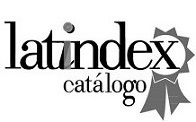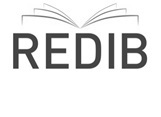Submissions
Author Guidelines
Cuadernos de Literatura. Revista de Estudios Lingüísticos y Literarios (ISSN 0326-5102) is a scientific journal of the Instituto de Letras “Alfredo Veiravé”. It publishes original academic contributions in the fields of Linguistics and Literature digitally, on a quarterly basis. The journal fosters interdisciplinarity in the human sciences, aiming contribute to the development of new research lines in the above-mentioned areas of study.
Published in May, September, and December, CLRELyL accepts submissions year-round, written either in Spanish, Portuguese, or English. It features four sections: review articles, essays, full-length articles and brief articles. All submissions undergo a peer-review process to ensure their quality (https://bit.ly/3SmaYzA). Reviewers are provided with an evaluation form, designed by the Editorial Board, as well as an anonymized copy of the manuscript and a formal request for arbitration (find the evaluation form here: https://bit.ly/3EFVqRy; and the essay evaluation form here: https://bit.ly/3EIjWBK).
Manuscripts must comply with the journal’s guidelines and general requirements (explore content in this section). If the submission does not meet these initial criteria, the manuscript will be rejected.
Submit your manuscript (an electronic file in .doc or .rtf format) to the following email address: cuadernosdeliteratura@hum.unne.edu.ar. Click here https://bit.ly/3IXIUzG to submit your manuscript online. Please include the paper title, author's name, and the section you are submitting to: full-length article, brief article, review article, or essay. Find the Journal’s template here: https://bit.ly/3ItnoB5.
On a separate document, please provide the following information: Author’s full name, academic rank/job title (if applicable), affiliation, name of institution, research line (if applicable), email address, ORCID (to obtain an ORCID, click here: https://orcid.org/) and abstract (not exceeding 150 words). If the manuscript is submitted through the Open Journal Systems (OJS), it must be mentioned in the Author's profile section.
As stated in Resolution 948/19 CD, issued by the authorities of the Facultad de Humanidades at UNNE, CLRELyL accepts contributions that choose to use inclusive language, although it is not mandatory.
Formal guidelines sections:
A) Books and Events Review
CLRELyL accepts reviews of books and events related to literary and linguistic studies.
- The book must be no more than three years old, based on the review's submission date. A book may be reviewed based on its reedition date.
- The review should be approximately 1500 words in length, with 1.5 line spacing, Times New Roman font, size: 12, and standard margins.
- A high-resolution scan of the cover of the reviewed book must be submitted (no less than 200 dpi, with 300 to 400 dpi being the most suitable), in .tiff or .jpg format.
B) Essays
We welcome texts that take a clear stance on a specific topic and demonstrate an understanding of related critical discussions. Therefore, essays must: explicitly state the conceptual and theoretical positioning; develop well-reasoned arguments to support the proposed hypotheses; address relevant debates based on these arguments; and provide a final synthesis as a result of the proposed exploration.
- Essays should be between 1,000 and 2,500 words in length, including footnotes. The bibliography will not be counted towards this word limit.
- The guidelines regarding footnotes, citations, bibliographic references, and other formal requirements are the same as those for points 2 through 13 in the next section: C) Full-length and Brief Articles.
C) Full-length and brief articles
Articles must be unpublished, original, and not under review by another journal.
- Full-length articles should be between 4,000 and 8,000 words, while brief articles should be between 2,000 and 4,000 words.
- The text must be anonymized.
- Formatting requirements: 1.5 line spacing, Times New Roman font, size 12, standard margins, justified text, first-line indentation: 1.25 cm. Please refer to the following template: https://bit.ly/3ItnoB5.
- First-page requirements (in both Spanish and English): Title (between 10 and 15 words), Abstract (up to 150 words) in both the publication language and English, Keywords (3 to 5, separated by semicolons).
- Short quotations (fewer than 40 words) should be included within quotation marks in the body of the text. A quotation within a quotation should use single quotation marks.
- Quotations longer than 40 words should be placed in a separate paragraph, using Times New Roman, size 11, without quotation marks, and with a 1.25 cm. indentation.
- All quotations must include their bibliographical reference, which should be placed in parentheses and include the author's surname, year of publication, and page number(s). For example: (Roas, 2001, p. 12). When citing webpages, provide the author's surname, year, and paragraph number. For example: (Pérez, 2002, parr. 25). For audiovisual resources, include the author's surname, year, and timestamp. For example: (Comedi, 2017, 15m32s).
- Use quotation marks and/or italics for emphasis; never use bold or underlining.
- Use italics for foreign terms.
- Include footnotes, with a file size of 10.
- If epigraphs are included at the beginning of the article or any of its sections, they must be attributed to their author. Epigraphs should be formatted with right indentation, in Times New Roman, size 12, italics, and without quotation marks.
- Each article should be followed by a complete bibliography listing all works cited or mentioned in the text or notes, under the title "Bibliographical References". Web addresses should be included whenever possible.
- The bibliography should be formatted according to the following guidelines (for a more detailed version, refer to: https://bit.ly/3ZrUTuA).
Books:
Author(s). (Year). Title of the Book. City, Publisher. Link.
Derrida, Jacques. (2001). Papel máquina. Madrid. Trotta.
Schwab, Jean-Luc y Brazda, Rudolf. ([2010] 2011). Itinerario de un triángulo rosa. El último superviviente deportado por homosexual. Madrid, Alianza.
Reyero, Alejandra; Sudar Klappenbach, Luciana y Barrios Cristaldo, Cleopatra (comps.). (2021). Mirada, memoria y territorio: desplazamientos epistémicos, estéticos y patrimoniales en Latinoamérica. Resistencia, Instituto de Investigaciones Geohistóricas. https://bit.ly/3IrZjuH
Book Chapter:
Author(s). (Year). Title of the Chapter. In Title of the Book. (pp. xx-xx). City, Publisher. Link.
Barrenechea, Ana María. (1991). El género fantástico entre los códigos y los contextos. En Morillas Ventura, Enrique (ed.), El relato fantástico en España y Hispanoamérica (pp. 75-81). Madrid, Siruela.
Journal article:
Author(s). (Year). Title of the article. Title of the journal, Volume/Issue, page rank. Link.
Porrúa, Ana. (March 2021). Emplazamiento y ruina: trayectos del poema de Marília Garcia. Estudios de Teoría Literaria. Revista digital: artes, letras y humanidades, 10 (21), 30-43. https://bit.ly/3ExBT5Y
Kalinowski, Santiago. (2020). Lenguaje inclusivo en usuarios de Twitter en Argentina: un estudio de corpus. Cuarenta Naipes. Revista de Cultura y Literatura, 2 (3), 233-259. https://bit.ly/3sNBOVl
Dissertation or Thesis:
Author(s). (Year, Month Date). Title of the dissertation or thesis [Graduate/Postgraduate Degree Thesis]. Name of University and Source/ Institutional Repository. Link.
Acosta Matos, Mariel Mercedes. (2016). Subversiones lingüísticas del español: @, x, e, como morfemas de género inclusivo y otros recursos estilísticos en publicaciones anarquistas contemporáneas [Tesis de maestría]. CUNY City College. https://bit.ly/3NvdfWZ
Rubino, Atilio Raúl. (2017). Heinz Heger y los hombres del triángulo rosa. En Sexualidades disidentes en la literatura y el cine de habla alemana (1969-1980) (pp. 70-83) [Doctoral thesis]. Universidad Nacional de La Plata, Memoria Académica. https://bit.ly/3gV8pWL
Andión Linares, Marta. (2020). El lenguaje inclusivo: estudio de uso a partir de los editoriales de dos periódicos de tirada nacional [Tesis de grado]. Universidade da Coruña.
Jacinto García, Eduardo José. (2013). El principio de autoridad en los diccionarios generales del español (siglos XVIII-XX) [Doctoral thesis]. Repositorio Institucional de la Universidad Complutense de Madrid. https://bit.ly/3TWB9wV
Articles published in proceedings:
Author(s). (Year). Title of the article. In Title of Conference proceedings. City, Name of University and Source/ Institutional Repository. Link.
Martínez, Angelita. (2019). El lenguaje inclusivo. La mirada de una lingüista. En Actas del Primer Congreso de Lenguaje Inclusivo. La Plata, Memoria Académica. https://bit.ly/3Bxp6hH
Troncoso, Muriel; Romero, María Cecilia; Funes, María Soledad y Poggio, Anabella. (2022). Los estereotipos genéricos en la elección de las profesiones en los Bachilleres con Orientación Profesional en Lengua y Literatura. En Cocciarini, Natalia y Malizia, Andrés (comps.), Trans-formando los saberes desde la experiencia. Actas del VIII Coloquio Interdisciplinario Internacional Educación, Sexualidades y Relaciones de Género. II Jornadas de Educación, Género y Sexualidades (pp. 242-250). Rosario, Facultad de Humanidades y Artes Ediciones. https://bit.ly/3XOz5bq
Web Page:
Author(s). (Year, Month Date). Title of the page or section. Website name. URL
González Moreno, Pilar. (April 10th 2018). Se puede y debe decir la médica, con “a”. EFE Salud. https://bit.ly/3Dvf8Ou
- Include URLs where possible.
- For references not included in this guide, please refer to the APA 7th edition regulations.
- All documents can be accessed through the following link: https://bit.ly/41Dlxmh
Copyright Notice
Authorship Statement
When a manuscript submitted to CLRELyL has multiple authors or has benefited from the contributions of other collaborators, it must include a statement at the end detailing the roles of authorship and participation. The Contributor Roles Taxonomy (CRediT) aims to provide appropriate credit for all roles involved in the research process, thereby ensuring visibility and due recognition of each contribution in the dissemination of the findings. To this end, the CRediT taxonomy specifies various collaborative roles, such as formal analysis, conceptualization, writing (review and editing), among others, which can be consulted at the following link: https://hdlab.space/taxonomia.
In cases where writing was the sole collaborative activity and the authors shared this task equally, the following statement may be used: "Author 1 and Author 2 contributed equally to the writing of this article."
Privacy Statement
The names and email addresses provided to this journal will be used solely for the stated purposes of the publication and will not be disclosed to third parties or utilized for any other purposes.




52.jpg)









